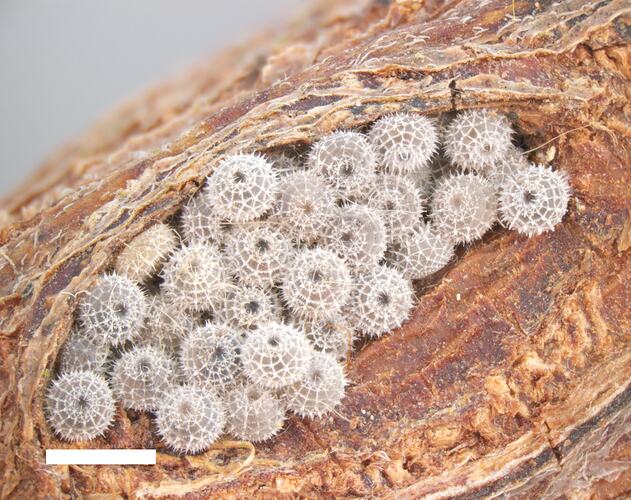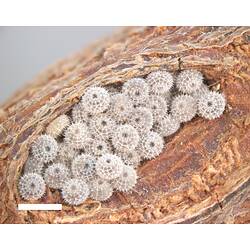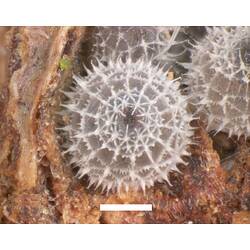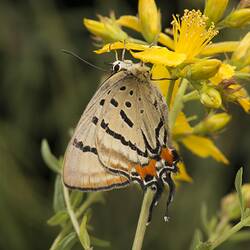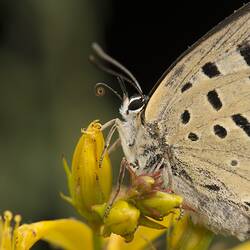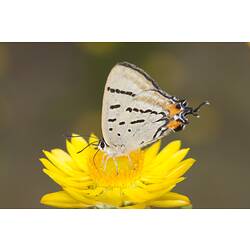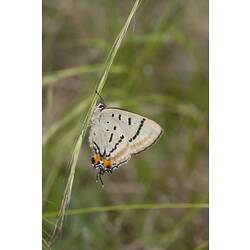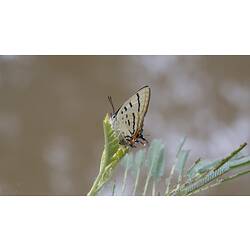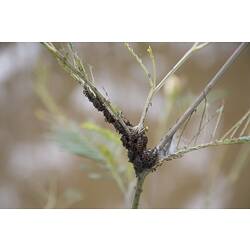General Description
Above: metallic greenish blue with black margins to wings and two orange spots near tail of hindwing. Below: yellow-buff coloured with black markings and orange spots to bottom of hindwing. Antennae clubbed. Hindwings with tails. Wingspan up to 4 cm.
Biology
The young caterpillars of the Imperial Hairstreak are tended by ants which protect them from predators and parasites. In return, the ants collect sweet secretions from the caterpillars. The caterpillars feed on young wattle trees, particularly Black Wattle (Acacia mearnsii), Silver Wattle (A. dealbata) and Blackwood (A. malanoxylon). The caterpillars turn into pupae (cocoons) on a communal web and the butterflies emerge from November to April.
Distribution
Eastern mainland Australia.
Habitat
Edge of forests and along roadsides, where wattle trees grow.
More Information
-
Animal Type
-
Animal SubType
-
Brief Id
This butterfly has tails on its hindwings with orange spots just above the tails.
-
Colours
Brown, Black, Yellow, Green, Orange, Blue
-
Maximum Size
4 cm
-
Habitats
-
Diet
Nectar
-
Endemicity
-
Commercial
No
-
Conservation Statuses
CITES: Not listed, FFG Threatened List: Not listed, DSE Advisory List: Not listed, IUCN Red List: Not listed
-
Plants
Wattle trees
-
Flight Start
November
-
Flight End
April
-
Taxon Name
-
Scientific Author
(Pfitzner, 1805)
-
Common Name
Imperial Hairstreak Butterfly
-
Other Names
Common Imperial Blue
-
Kingdom
-
Phylum
-
Subphylum
-
Class
-
Subclass
-
Superorder
-
Order
-
Suborder
-
Superfamily
-
Family
-
Subfamily
-
Genus
-
Species Name
evagoras
